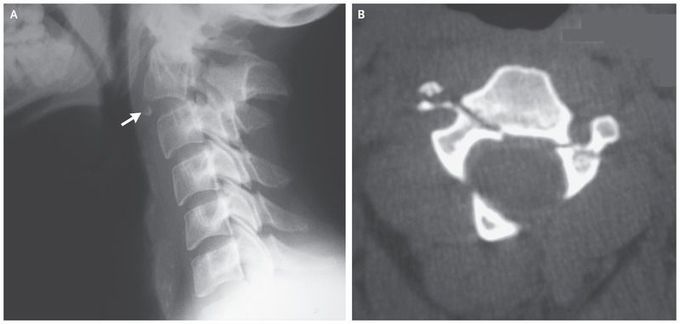


Traumatic Spondylolisthesis of the Axis
A 25-year-old man presented to the emergency department with severe neck pain after he was involved in a high-speed collision between two vehicles. He had full strength in his arms and legs, normal sensation to light touch and pinprick, and no sphincter disorders. A lateral radiograph (Panel A) showed disruption of the intervertebral disk between the C2 and C3 vertebrae, posterior angulation of the C2 vertebra fragment, fracture of the left pedicle of the axis, and a small inferior anterior fragment (arrow). An axial computed tomographic scan (Panel B) confirmed that the right and left pedicles of the C2 vertebra were fractured. Traumatic spondylolisthesis of the axis, also known as a hangman’s fracture, is caused by hyperextension of the neck. These fractures are classified according to the degree of anteroposterior deviation, presence of disruption of the posterior longitudinal ligament, position of the fracture line, and presence of a facet-joint dislocation. Stable fractures with minimal displacement may be managed conservatively with external immobilization, but unstable fractures, as in this case, require surgical stabilization. The patient underwent anterior fusion of the C2 and C3 vertebrae, and at follow-up 4 years later, he had no neurologic deficits and was free from pain.

